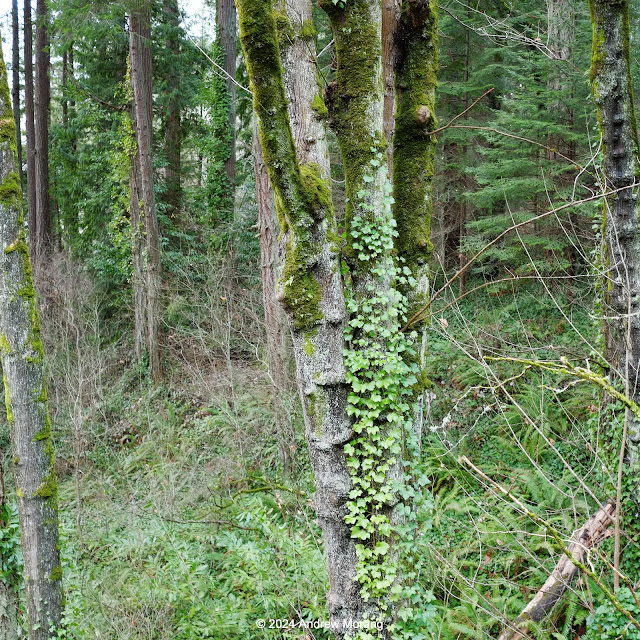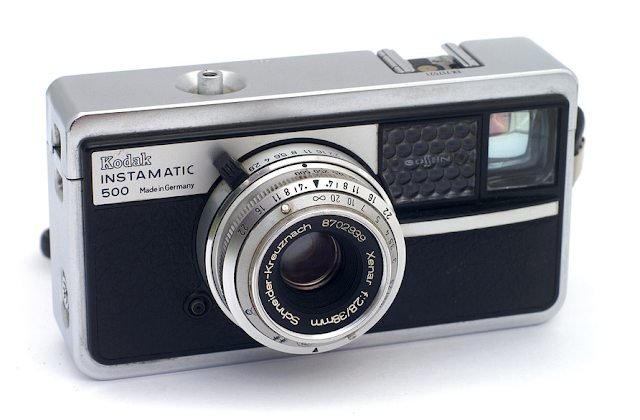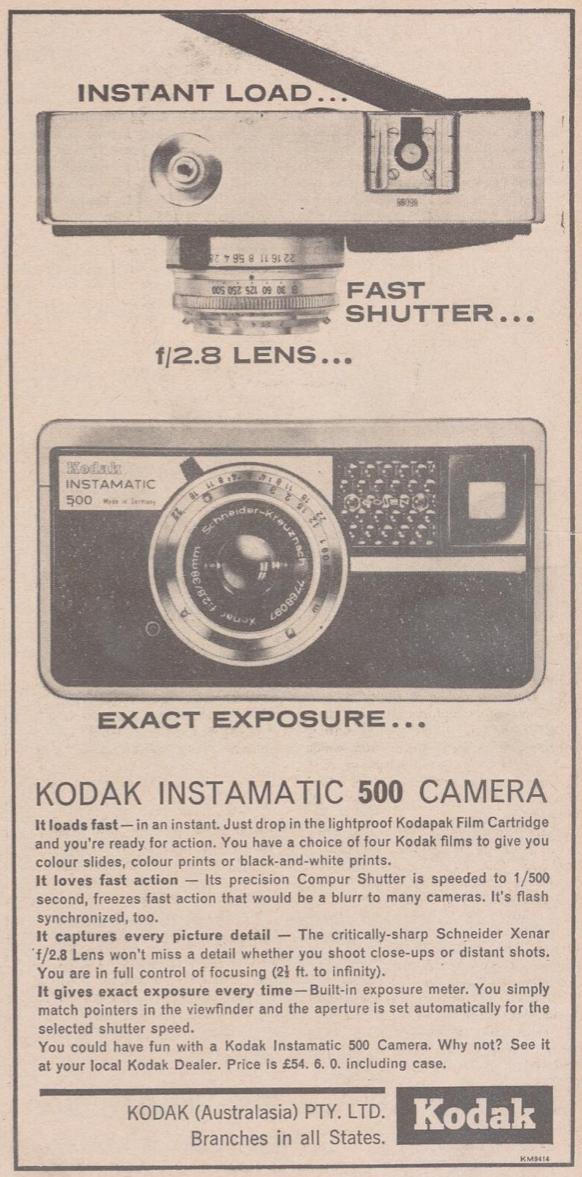Business took me to western Washington in 1995. A coworker and I looked at the beach at Ocean Shores, which faces the Pacific Ocean at the mouth of Grays Harbor. Southward sediment transport had built a wide beach against the north jetty. Developers were building condominiums on the beach. Was this a vulnerable location? Were there feasible escape routes if sirens warned of a tsunami? What would happen to the beach if the sediment transport shifted to moving north?
After the field trip, we had a few days to spend in Seattle. My coworker had never been to the city and was intrigued by the Space Needle. A fellow we met under the Needle generously offered us two free tickets for the elevator. It was a gorgeous sunny day, so, of course we took the lift to the viewing balcony.
 |
| Room with a view: Space Needle from the Mediterranean Inn (Fuji digital photograph taken with a Jupiter-8 lens) |
 |
| 2004 panorama of South Lake Union district from Eastlake Avenue E (Hasselblad XPan camera) |
First, the general setting. This is a 2004 panoramic photograph of Queen Anne (the hill to the right), South Lake Union, Uptown, and Belltown districts (taken with a Hasselblad X-Pan camera). The Needle is the iconic tower built for the 1962 World's Fair. In the 1970s, when I was a student here, this area south of Lake Union was a commercial district of warehouses and manufacturing. By the early 2000s, it was transforming into condos, clubs, museums, and modern businesses. In the photograph above, the red building in the foreground is part of the Fred Hutchinson Cancer Center, one of the foremost cancer research institutes in the world. Click the picture to enlarge the scene and see the snowy Olympic Mountains in the distance.
 |
| Port of Seattle, view south from Space Needle |
Now, let's ascend to the viewing balcony on the Space Needle and look south. Seattle is a high value seaport. It is a spectacular natural harbor because it is ice-free, deep, and sheltered from Pacific Ocean storms. In the photograph above, you can see the container terminal in the distance with a freighter in the roadstead. A ferry boat is on its way to Bremerton. Many Seattleites commute daily via the ferries. Seattle is also a major cruise terminal, but I do not see any cruise ships in this scene.
To the left, you can see two features that are now, thankfully, gone.
The big white dome is the infamous
Kingdome. I recall some of the controversy during construction in the 1972-1973 period. It was sited in the Industrial District south of Pioneer Square. African-American businesses were displaced (
i.e., forced out at low real estate values). Construction was plagued with errors, poor design, and a contractor who was unable to complete the work. The building suffered water problems. Parts of the roof collapsed in 1994. Finally, controlled implosion in March of 2000 brought down the nasty structure. A century-old African-American community had been replaced by a boondoggle that lasted 27 years. King County taxpayers had to pay for the bonds for another 15 years. Hmmm, is it possible some corruption was involved?
 |
| Alaskan Way Viaduct before demolition (from Wikimedia, based on Open Street Maps) |
To the right of The Kingdome is the Alaskan Way Viaduct, a double-decked freeway that carried State Route 99 along the waterfront. The city built the viaduct in three phases between 1949 and 1953. It cut off the city from the waterfront, similar to the way the Southeast Expressway in Boston became a barrier between Boston, the North End, and the waterfront. The web site,
The Historic Pacific Highway in Washington, has
more information about the viaduct.
Engineers knew that the viaduct was vulerable to earthquakes. The 1989 Loma Prieta earthquake in Oakland, California, destroyed the similar Cypress Street Viaduct, causing 42 deaths. The 2001 Nisqually earthquake in Seattle damaged the viaduct and its supporting Alaskan Way Seawall. The steel flanges, girders, and bolts that I saw in 2004 were attempts to shore up the structure of the viaduct.
My coworkers at the Corps of Engineers were well aware of the viaduct's earthquake vulnerability. They told me which lanes to use in case the upper structure collapsed. By carefully driving between the concrete support rows, my car would be only partly squashed by the descending concrete roadway. I was so reassured....
After long and heated debate, King County, the city, and the Port of Seattle decided to bore a tunnel under the route of the viaduct and totally remove the concrete eyesore. You know the story: the tunnel cost vastly more than originally predicted and numerous technical issues slowed construction, but it finally opened to traffic in February of 2019. Demolishing and crunching up the viaduct took only a year. The city now has access to the waterfront without the concrete eyesore.
On recent trips to Seattle, I have driven Route 99 instead of fight the traffic on I-5. The tunnel appears to flow well while I-5 is bumper-to-bumper. Cameras automatically tag your car to identify where to send a bill for the toll.
 |
| Lake Union with the University of Washington Campus in the distance |
Turn to the northeast and look at the body of water. Lake Union is a freshwater lake in the center of Seattle. The Fremont Cut (to the left) lets boats reach Puget Sound via the Hiram M. Chittenden Locks. The Montlake Cut, beyond the I-5 bridge in the distance, gives access to Lake Washington. Museums, shipyards, houseboats, and seaplane companies line the shore of Lake Union. "Sleepless in Seattle" takes place in one of these houseboats. The Vashon Glacier excavated the lake about 12,000 years ago and sculpted most of the contemporary geomorphology in the Puget lowlands.
 |
| Lake Union view south |
This is Lake Union from the Gas Works Park, the site of a former coal gasification plant from the early 20th century. The Gas Works operated from 1873 to 1956, when natural gas from Canada supplanted the nasty and toxic gas plant. A landscape architect and University of Washington professor, Richard Haag, designed a plan to convert the site into a park, retaining some of the steel towers and tubes.
This ends our much too quick overview of Seattle. I want to look at my 1970s archives and see if there are more photographs from downtown.
By the way, if you want to see a really bad Elvis movie that features the Space Needle, watch "It Happened at the World's Fair." As TCM described it, "The Monorail and Space Needle are prominent as Mike (Elvis Presley) and friend Sue-Lin (Vicky Tiu) take in the sights". It is an utterly absurd plot, but Elvis sings. What more could you want in a movie?
This was article Sea 02























































